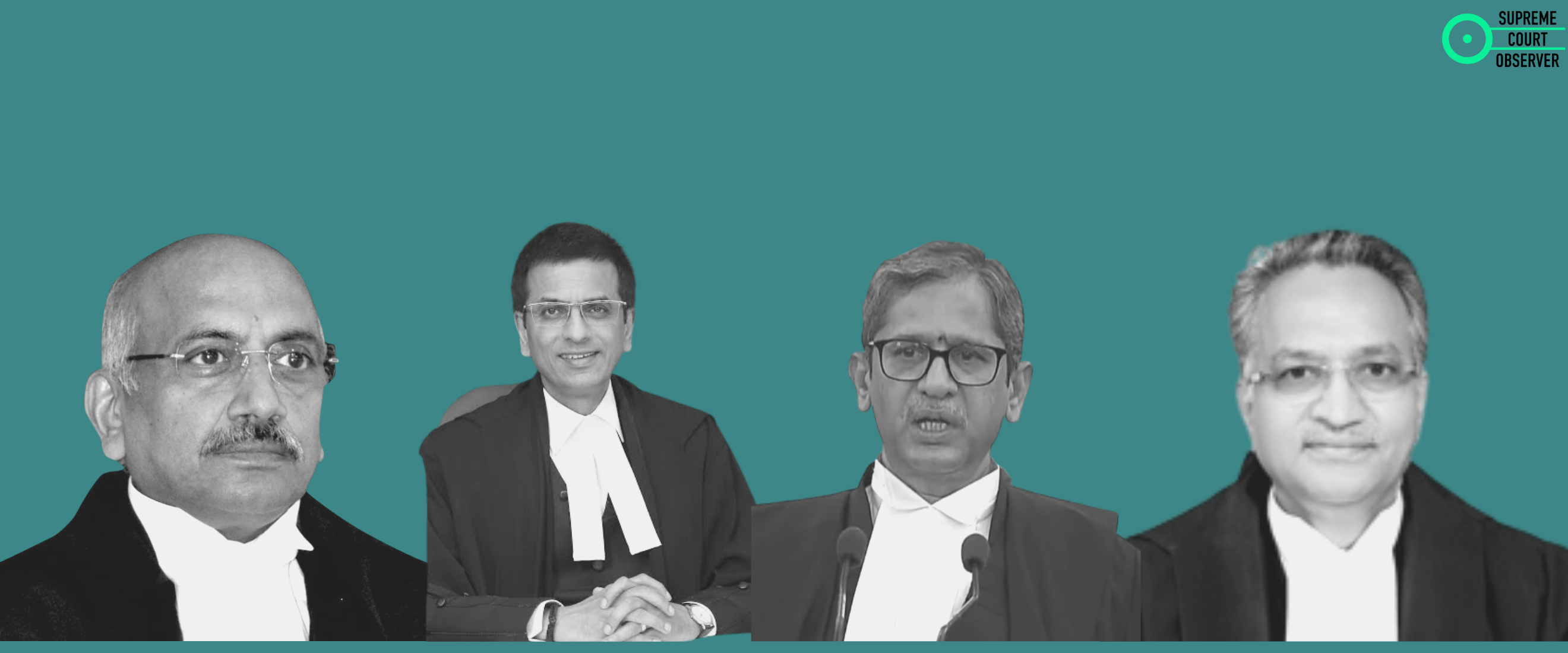Analysis
Media Provided Virtual Access to the Supreme Court
In an online ceremony, N.V. Ramana CJI launched an app to provide the media access to Supreme Court video links.

Today, on May 13th, Chief Justice N.V. Ramana launched an app to provide the media access to Supreme Court video links. The launch was also attended by the E-committee of the Supreme Court and the Secretary General of the Registrar.
Justice Khanwilkar said that journalists, accredited and non-accredited are rendering essential services, which must be harnessed. He indicated that while the app was temporary, based on the experience, it might become a permanent feature. Justice Gupta also noted that this would improve the interests of transparency at the Court. But journalists should ensure they use it in a bona fide manner.
Justice Chandrachud, who heads the E-committee, noted that the Chief Justice had been easily persuaded by his suggestion to make video conferencing links easily available to the journalists. The provision of access was approved within three days. He hoped this would ensure the safety of all reporters and journalists, who had to physically go to media rooms in the Supreme Court till now.
Ramana CJI also noted the struggle faced by journalists. Many were relying on advocates for video links to attend proceedings safely from their home.
Both Justices Chandrachud and Khanwilkar are currently recovering from COVID. He noted that 800 staff members at the Supreme Court had tested positive since the start of the pandemic, three lives were lost. Hundred and six High Court judges have also tested positive and three have died. The app was developed in just seven days, despite six of the members in the team having tested positive. Recognising this dire situation, the CJI hoped the app would improve safety for journalists.
Ramana CJI said that transparency is an important principle of the judicial process in India. Access to the public is essential as they are the ones who will be affected by the proceedings. The media plays the part of disseminating this information. The need for accurate reporting must be fulfilled. The Secretary General of the Registrar announced that the app would be available on the Play Store. Devices registered with the Public Relations Office would be able to access links through it.
Media has the Right to Report Live Proceedings
In a recent case, Chandrachud J and MR Shah J had upheld the media’s right to report court proceedings live. The Election Commission had appealed against the Madras High Court’s ‘disparaging’ remarks. It sought to stop the reporting of live proceedings as they did not form part of the final order. However, writing the judgment for the bench, Chandrachud J highlighted two fundamental principles under the Constitution- ‘open court proceedings; and the fundamental right to the freedom of speech and expression’.
He said courts must be open in both the ‘physical and metaphorical sense’. It ensures that the judicial process, including courtroom dialogue, is subject to public scrutiny. This is essential in maintaining transparency and accountability, and thereby establishing public faith in the judiciary. Proceedings are also a source of information about the legislature and executive.
He cited the Madrid Principles on the Relationship between the Media and Judicial Independence. The freedom of expression of media is essential. It allows citizens to ‘ensure that courts remain true to their remit to be a check on arbitrary exercises of power’. With the advent of technology, this right would naturally extend to modern forms of media. This would include ‘live text-based forms of communication’ such as tweets.
This right is placed in the context of augmenting the integrity of the judiciary and the cause of justice as a whole. He cited, as an example, the reporting on the famous speech of Lokmanya Tilak when he was found guilty of sedition.
Other Accessibility Measures on the Way: Indicative Notes, Live telecast
Ramana CJI also announced a new section on the Supreme Court website and app titled ‘Indicative Notes’. These would include summaries of landmark judgments, in a bid to improve accessibility. This was initiated by Bobde CJI. He also noted that the live telecast of proceedings was under ‘active consideration’. However, there was a need for the Bench to arrive at a general consensus on the matter.
In Swapnil Tripathi v Union of India, a three-judge bench led by CJI Dipak Misra had held that the Court should live telecast proceedings of some cases of public importance. Recently, Indira Jaising had also filed an application to enforce this order.
